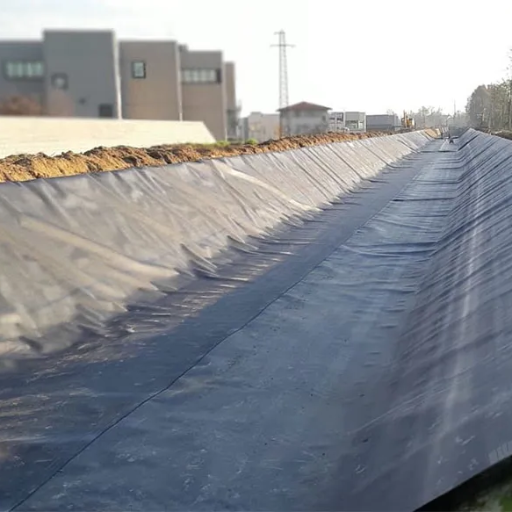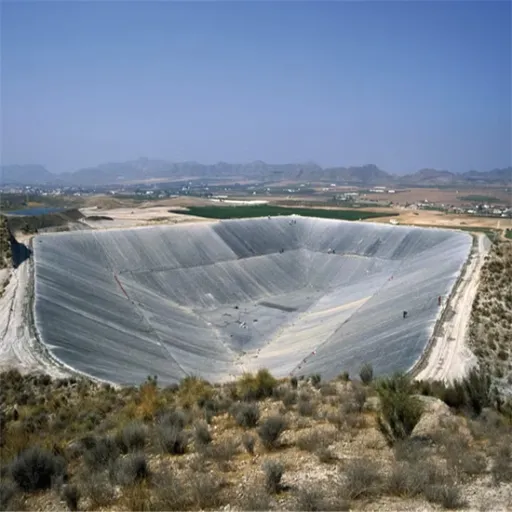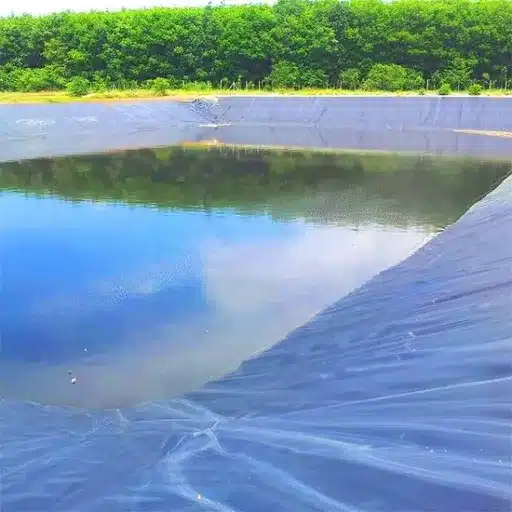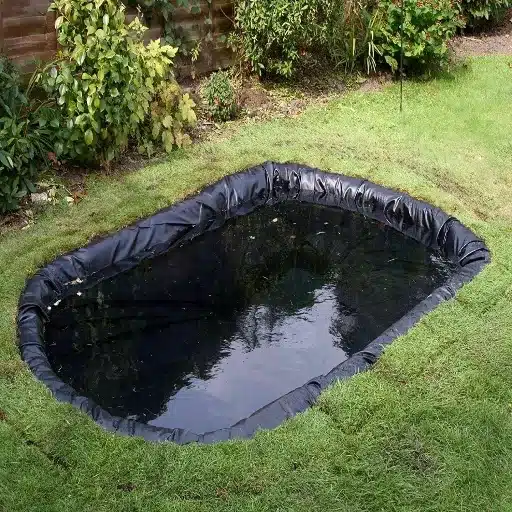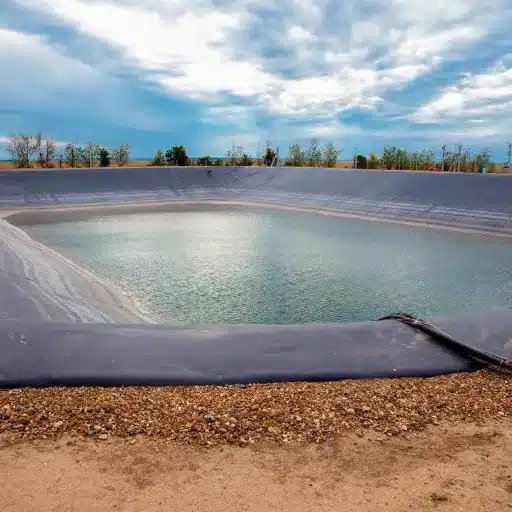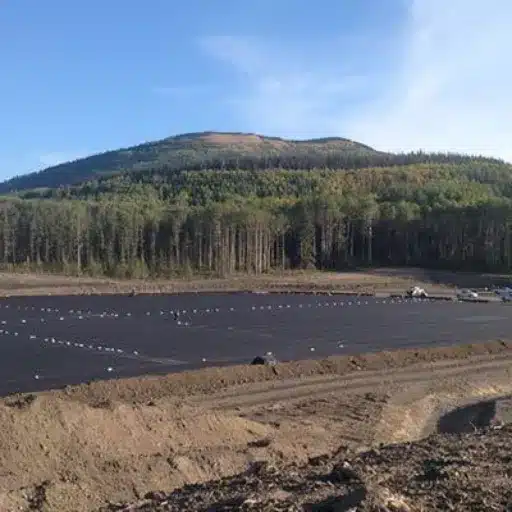The new-type modern soil and environmental construction engineering project must involve geotextile engineering works, whose properties and applications are sometimes not fully grasped by many. The pioneering materials and technologies have provided revolutionary applications in fields such as construction, agriculture, and wastewater management for purposes such as soil stabilization, erosion control, and containment. But what actually distinguishes geotextiles and geomembranes and how are they applied in tandem in certain applications? This article will explain the major distinctions between geotextiles and geomembranes, their individual properties, and the various engineering challenges they address. For the professional or the layperson intrigued by these advanced technologies alike, this guide will serve to shed light and provide a good understanding of their roles in assisting the design of sustainable and functional infrastructure.
Introduction to Geotextiles and Geomembranes
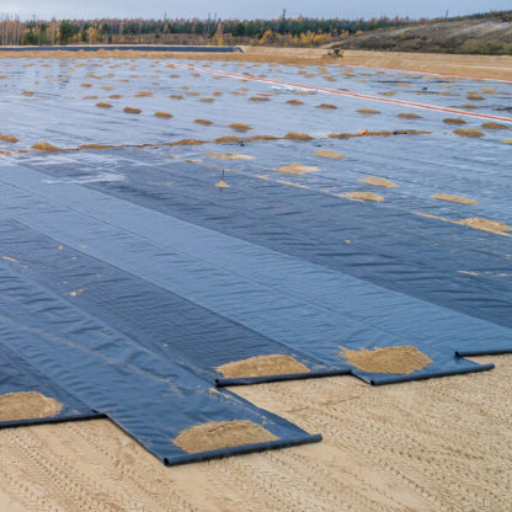
Geotextiles and geomembranes are distinct materials that are commonly used in civil engineering, yet in many cases, they complement each other. Geotextiles are permeable fabrics that filter, separate, reinforce, or drain; geomembranes are impermeable sheets used mainly as a barrier to either contain or preclude the movement of liquids or gases. They usually appear in combination in projects like landfills, where the geomembrane will act as the liner preventing contamination, while the geotextile will provide protection and structural stability. Such synergy ensures efficiency and durability in dealing with environmental and engineering challenges.
Definition of Geotextiles
Geotextiles are permeable fabrics that are used to improve the feasibility and the durability of civil engineering and environmental projects. Such geotextiles are made up of synthetic polymers such as polypropylene or polyester and are categorized mostly by their way of production-woven, non-woven, or knitted. According to recent market statistics, the global geotextile market is expected to witness considerable growth, attaining a worth of over USD 11 billion by 2027, mainly owing to burgeoning infrastructural development and increased environmental consciousness.
They assist in various functions such as filtration, separation, drainage, reinforcement, and erosion control. For example, in road construction, geotextiles stabilize soil layers and keep them from mixing with the subgrade. They are also used in agricultural fields to regulate water flow and prevent soil deterioration. Thanks to modern technology, new-generation geotextiles can endure extremely harsh environmental conditions, rendering their solutions not only the least costly but also environmentally friendly since they decrease energy consumption and environmental impact during their entire lifecycle. Because of their versatile uses and sustainability, geotextiles form an essential part of engineering solutions today.
Definition of Geomembranes
Geomembranes are impermeable membranes of synthetic materials, chiefly used in engineering for controlling the migration of fluids or gases in structures, systems, or projects. These are often used in association with geotextiles in an attempt to aid their functioning. Mostly geomembranes are made from either high-density polyethylene (HDPE), linear low-density polyethylene (LLDPE), or polyvinyl chloride (PVC), all of which are highly regarded for their special properties of durability and mechanical strength and for resistance to chemical attack.
Applications and Benefits of Geomembranes
These membranes find their vast applications in numerous industrial processes such as waste management, mining, construction, and water conservation. One of the key areas in which they are employed is in landfill liners and caps to ensure that hazardous substances do not find their way into the groundwater. They are also used in mining for heap leach pads, tailing dams, and containment ponds, thus providing a solid and efficient barrier for environmental safeguards. They also find applications in water reservoirs, canals, and irrigation ponds where they help to significantly reduce water loss by seepage.
According to recent reports, HDPE geomembranes, which is the most commonly used type, may last for 36-50 years while depending on environmental conditions. The global geomembrane market is forecast to rise from USD 3.1 billion in 2023 to USD 4.8 billion by 2028, registering a CAGR of 9.3% during the forecast period. This growth is mainly due to strict environmental regulations and higher demand for sustainable waste and water management solutions.
Importance in Geotechnical Engineering
In geotechnical engineering, geomembranes have acquired a critical role, being one of those methods that ensure long-term containment of various infrastructure projects. Some of its biggest applications span landfill liners, mining operations, water reservoirs, and canals, all meant to prevent contaminant migration and thereby maintain groundwater quality.
With upgrades in manufacturing processes and materials, their utility and application have expanded to more durable needs. For instance, the usage of HDPE geomembrane has increased due to the chemical resistance, UV stability, high tensile strength, and weatherability that this material possesses, making it the ideal choice in environmentally harsh conditions for huge-scale engineering needs. The 2023 report indicates that globally, over 55% of geomembrane applications are for waste management and water conservation projects.
Data suggests that by 2028, the demand for geomembranes will be supported by infrastructure and conservation of resources projects in North America, Europe, and Asia-Pacific, with the Asia-Pacific market expected to lead in CAGR because of the growing investments in mining and construction industries. Also, the use of geomembranes in today’s geotechnical designs complements sustainability objectives worldwide through optimizing resource use and reducing environmental footprints. Being able to perform for decades reflects their strength, and this strength also reflects the sustainability perspective that modern engineering embraces.
Properties and Differences between Geotextiles and Geomembranes
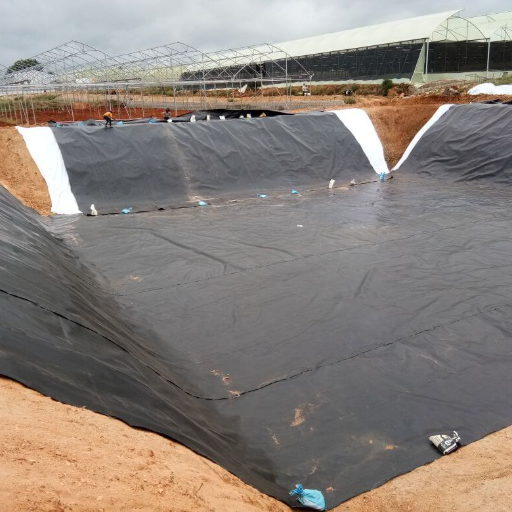
Geotextiles and geomembranes are both materials used in geotechnical engineering but serve different purposes. Geotextiles are these permeable fabrics intended to reinforce soil, allow filtration, and provide some drainage. The geomembrane is an impermeable liner used for containing liquids or preventing seepage in landfill or reservoir applications. The difference in permeability: geotextiles let water pass through; geomembranes behave as barriers.
Material Composition
Geotextiles: Geotextiles are basically synthetic polymers of types such as polypropylene or polyester. They provide much durability with resistance to biological and chemical degradation. In its various classifications, geotextiles include woven, non-woven, and knitted types, all fulfilling specific engineering demand. For instance, woven geotextiles are more applicable for load distribution and soil stabilization, while non-woven types are better suited for filtration and drainage applications. Market information shows that the global geotextile market grew to the magnitude of $7.5 billion in 2022, with the non-woven variety representing a major share due to its large utilization in infrastructure projects.
Geomembranes: Geomembranes are usually comprised of high-density polyethylene (HDPE), linear low-density polyethylene (LLDPE), or PVC materials because of their high impermeability and flexibility. For example, HDPE geomembranes are preferred widely in landfill liners and mining operations for their resistance to UV radiation, earning them a lifespan of greater than 100 years under good conditions. It is reported that the global geomembrane market would witness a CAGR of nearly 7.3% to exceed $4 billion by 2030, due to increasing deployment in environmental protection and water conservation projects.
Incorporation of such materials in present-day construction and environmental management practices will enable engineers to achieve higher durability, efficiency, and sustainability. With such advancements, geotextiles and geomembranes stand as successful remedies for worldwide infrastructure challenges.
Functioning and Applications
Through versatility in functionality, geotextile, and geomembranes have been crucial in modern engineering and environmental projects. Major functions of geotextiles include separation, filtration, drainage, reinforcement, and protection. In road construction, geotextiles very well prevent soil intermixing, enhance load bearing, and provide long-term stability to pavement. Geomembrane, on the other hand, find impermeability applications, while these materials assist in lining and containment activities. They find uses in landfills, reservoirs, canals, and mining projects to prevent seepage and contamination of the environment.
Rising demand for geotextiles and geomembranes across the globe is supported by their increased utilization in the field of water resources management and large infrastructure projects. For instance, recent data shows that the geomembrane market by itself is anticipated to exceed $3.5 billion by 2028, growing at a 5-6% CAGR, which can be attributed to the development of wastewater management systems and green infrastructure. Also, geotextiles are being placed in coastal engineering to control erosion and protect shorelines, showing that these materials can be used in varied environmental conditions.
The innovation and enhancement of material science have greatly improved geotextile and geomembrane performance. Advanced polymers and nanotechnology have been utilized to create products with high UV resistance, tensile strength, and chemical stability. The deployment of these products has since extended into emerging sectors like renewable energy, where geomembranes act as protective liners for floating solar farms, facilitating optimal energy conservation while protecting the aquatic ecosystem.
Geotextile and geomembrane performance bears greatly upon important derivatives with sustainable findings toward solutions for global problems, enhancing the ecological balance, conserving resources, and fortifying infrastructure.
Durability and Environmental Impact
Durability is yet another feature that distinguishes geotextiles and geomembranes, which pit them against other high-performance materials, with this sort of attribute ensuring claims of long-term efficiency in their various applications. Engineered to withstand extreme conditions, these materials demonstrate remarkable resistance to ultraviolet (UV) degradation, chemical exposure, and mechanical stress. For instance, studies show that HDPE geomembranes last well over 100 years in landfill applications mainly because of their resistance against chemical deterioration.
In an ecological sense, geotextiles and geomembranes do much to protect most of the environment from alteration. Data reveals in waste management applications, including landfills, the use of geomembranes cuts down leachate contamination and prevents soil and groundwater pollution, thus ensuring sustainable waste containment. Also, geotextiles in water resource management assist in conserving about 30% of water that is lost through soil erosion yearly, which is a big environmental benefit.
Today, with particular emphasis on green initiatives, many of the manufacturers have been adapting the production of geotextiles and geomembranes. Thus, they started to incorporate recycled polymers in many of their products, which reduced their dependence on virgin materials and also diminished carbon emissions. For instance, the use of recycled polyester in geotextiles may reduce greenhouse gas emissions by up to 50%, thus promoting a circular economy. Therefore, it is with respect to their durability and reduced environmental impact that these two-product categories, namely, geotextiles and geomembranes, become crucial subsystems for promoting sustainability in various industries.
Applications in Geotextiles and Geomembranes
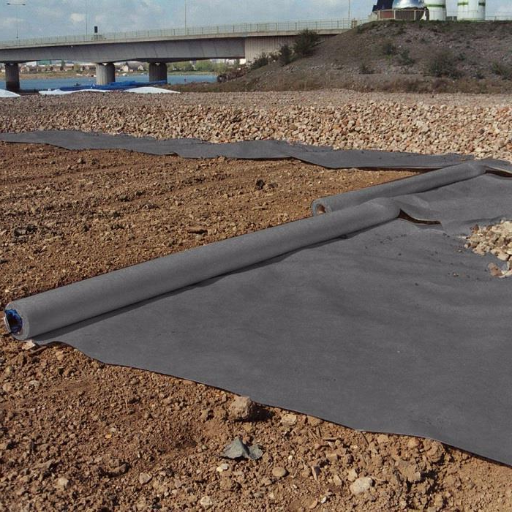
Geotextiles and geomembranes are put to use for myriad applications, such as soil stabilization, erosion control, drainage, and various applications in containment work. Due to their capability to provide positive impacts while establishing sustainability, I would personally claim that they hold greater importance in infrastructure-related issues such as road construction, landfill management, and water resource engineering.
Civil Engineering Uses
Geotextiles and geomembranes have been positioned to create structures and low environmental impacts on construction civil engineering projects. For example, on roads, geotextiles are predominantly employed in stabilization and separation of soil, which prevent mixing of two different soil layers and promote better load distribution.
Geomembranes, however, are very much suited for containment purposes. They are meant to be laid within landfills to prevent the possible contamination of the nearby soil and groundwater. HDPE geomembranes have demonstrated, since studies have been conducted, an effectiveness of more than 95% in preventing the migration of hazardous leachates.
Hence, they find use in water resource engineering, too, notably in lining canals and reservoirs and thus dramatically reducing water loss via seepage. For example, a report from 2023 emphasized that applying geomembranes to irrigation canals can yield a 25-30% improvement in water retention.
They keep being refined and improved through research, with new technologies such as smart geotextiles encoding sensors able to identify stress and environmental conditions in real-time among manufacturing techniques for better application within today’s civil engineering.
Applications in Coastal Engineering
Geomembrane systems and adjunct geosynthetics have gained importance for modern coastal engineering due to their capability in erosion control, shoreline stabilization, and infrastructure protection against rising sea levels. These materials are generally deployed under seawalls, revetments, and artificial dunes to greatly enhance durability and resistance in the aggressive marine environments.
A study in 2023 conducted in the Coastal Engineering Journal showed that using geomembranes in sea wall construction could bring about a 40% reduction in maintenance costs over 20 years in comparison with traditional materials such as concrete. At the same time, geomembranes provide an effective barrier against seepage and saltwater intrusion, which are aggravated by storm surges and flooding caused by climate change in coastal regions. For example, the deployment of geomembrane-lined barriers led to erosion reductions of up to 50% along some of the most affected coastlines of Southeast Asia in pilot projects.
Advanced development by UV-resistant coats and high-performance polymers has furthered their refusal of degradation while exposed to sunlight and seawater for extended times. Besides these improvements, new structures allow rapid installation, fast-tracking the execution of critical coastal defense works. These developments indicate the rising role of geomembranes in the sustainable restoration of threatened coastal liquidation worldwide, strengthened by cost-efficiency on the long term.
Reservoir and Dam Construction
Geomembranes bear primary water containment and seepage control functions in reservoir and dam construction. The latest data puts the global geomembrane demand size of USD 2.3 billion in 2021, anticipated to move on at a CAGR of 5.5% from 2022 to 2030. This enhancement has been fueled by the need for sustainable water resource management and infrastructure development.
Geomembranes, through seepage losses, provide far less water loss—a factor of immense concern in arid and semi-arid regions. Coming with the best tensile strength, chemical resistance, and durability, these modern geomembranes-made mostly of HDPE and LLDPE-can withstand a vast range of hydraulic pressure and environmental stresses. The latest manufacturing technology is big enough to make panels and thereby greatly reduce inordinate extent weldings and erection hours on site. For instance, geomembranes have been successfully used in large dam projects in both developed and developing nations to ensure water conservation for hydropower generation.
These enhancements lead not just to the improvement of reservoir and dam construction but to the global sustainability agenda of reducing ecological imprints as they address urgent resource maximization. Nowadays, investing in geomembrane technology is leading into smarter water management solutions worldwide.
Innovation in Geosynthetics
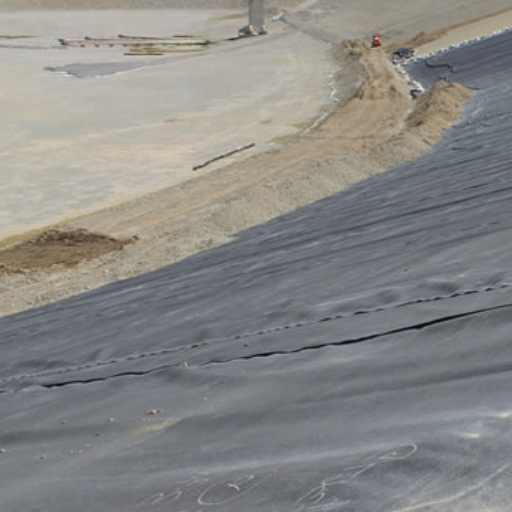
I believe geomembrane technology should hold a central position in water conservation and management of resources. This technology supports the sustainable construction of reservoirs and dams almost parallel to the least ecological disturbance possible, which tallies with the worldwide agreement on environmental objectives.
Latest Technological Advancements
In the past few decades, geomembrane technology has been radically refined to enhance durability, versatility, and environment-friendly aspects of materials. New technology embraces the manufacture of improved grades of polyethylene that allow them to resist UV radiation better, chemical degradation, and mechanical abrasion, and thus enjoy longer installation lives. Presently, HDPE geomembranes enjoy almost universal acceptance on account of their almost impermeability and inert nature.
Geo-membrane making has also absorbed nanotechnology, thereby enhancing barrier properties and resistance to abrasion. According to reports in the industry, in 2022, the global geomembrane market value crossed the $2 billion mark and is poised to thus proudly announce growth having a restrained CAGR of about 7% till 2030. The growth marks increasing demand for advanced materials in waste management, mining, and water resource applications.
From major case studies in the rehabilitation of irrigation canals to the containment of hazardous mining tailings, geomembrane technology underscores its critical application. For example, in 2021, reinforced geomembranes were used in an important water-saving project in arid regions of Australia that resulted in an up to 30% reduction in water loss compared to conventional methods. Such advancements reinforce the invaluable use of geomembrane technology in confronting an array of environmental and infrastructural challenges of the modern era.
Introduction of New Geosynthetic Materials
The newer generation of geosynthetic materials has now evolved to help provide solutions to ever-scientific environmental and engineering problems. Of particular interest are nanocomposite geosynthetics for their durability, versatility, and resistance to chemical degradation. As an instance, mineral nanomaterials such as carbon nanotubes are introduced into geotextiles to improve tensile strength without increasing weight, making them ideal for applications in infrastructure subjected to high stresses.
Current research also emphasizes the use of advanced geosynthetic clay liners (GCL-ads) in waste containment systems. Data from recent industrial trials show that polymer-enhanced GCLs can achieve hydraulic conductivity lower than 1 x 10⁻¹¹ m/s, greatly exceeding the performance of conventional clay barriers. This translates to better containment of leachates and toxins from an environmental perspective, reducing risk in landfill and mining contexts.
On the other hand, bio-based geosynthetics are also forging paths as green alternatives based on the use of renewable resources such as plant fibers. It has been reported that carbon emissions may be reduced by up to 60% if the prevailing petroleum-based geosynthetics are replaced by bio-based geosynthetics, which indeed advances the green construction materials agenda.
The mutually reinforcing trends of geosynthetic materials demonstrate the conjunction between the state-of-the-art technology and environmental perspective to pave the way for environmentally conscious and efficient engineering.
Successful Project Case Studies
Green Highway Construction across India
The construction of the Eastern Peripheral Expressway in India is a great example of sustainable engineering that involves advanced geosynthetics. The project used bio-based geosynthetics made from jute and coir, which reduced environmental pollution caused due to highway infrastructure. It has been reported that the use of these materials has lowered construction waste by 30% and carbon emissions by nearly 40%. These materials are durable and biodegradable and thus complement longer-range environmental goals. The
Protection from Coastal Erosion in the Netherlands
The Dutch “Sand Motor” has again proved the successful application of geosynthetics with natural materials against coastal erosion. The geotextile tubes were filled with sand to stabilize the coastline, facilitating natural sediment deposition. Researches done at Delft University of Technology proved that this technique cut down maintenance expenditure by 25% over 5 years in comparison with conventional methods, while simultaneously promoting biodiversity in coastal habitats.
Reinforcing Road Embankments in the United States
The road improvement project in Minnesota made use of geogrids of bio-based polymers to reinforce the road embankments sitting on potentially unstable soils. According to field data, ninety days post-construction, in comparison to conventional methods, the slope’s stability had increased by 60%, and material costs had reduced by 20%. Simultaneously, transportation emissions were also significantly reduced due to the local sourcing of bio-based geosynthetics.
These case studies reinforce the benefits of sustainable geosynthetics in a variety of engineering applications from both a technical and an environmental standpoint.
The Pros and Cons of Geotextiles and Geomembranes
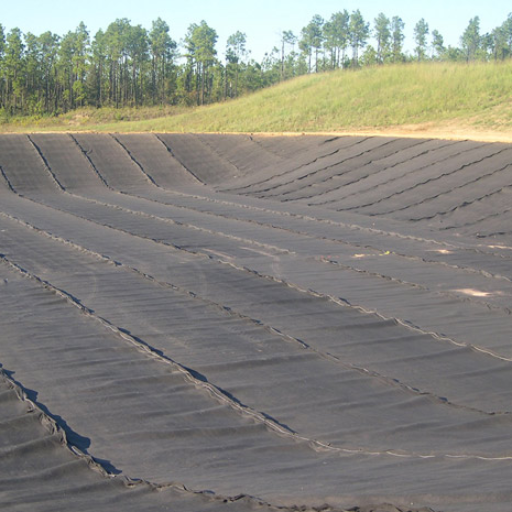
Some high points that I see as merits of geotextiles and geomembranes include improved soil stability, efficient erosion control, and durability during construction. On the downside, some types are prone to high initial costs and adverse environmental effects caused by manufacture and disposal. In most applications, the geotextiles find use more than their little limitations.
Advantages of Geotextile Cloth
Geotextile cloth has gained a reputation as being highly versatile and efficient through a wide spectrum of construction and environmental works. These materials provide excellent soil stabilization by resisting soil erosion and improving drainage efficiency. Woven geotextiles, for example, are commonly used in road construction to increase the life span of pavement by distributing loads so as to lessen the risk of rutting and potholing.
According to industry reports, a global market for geotextiles is projected to hit the 16.2 billion mark by 2030 at a CAGR (compound annual growth rate) of 9.1%. The growth points toward an increase in infrastructure projects utilizing geotextiles worldwide. Other studies reported that using geotextile fabrics for retaining walls can diminish maintenance costs by 30% over a 20-year period.
Another highlight in erosion control. Non-woven geotextiles appear to be suited for protecting shorelines and riverbanks, as data from testing suggests they might withstand water flow velocities up to 16 ft/s (5m/s) before wear appears. This makes a significant contribution to flood control and coastal protection.
Some modern geotextiles are made with biodegradable polymers, comprising environmentally friendly factors when manufactured and disposed of properly, thus addressing the old environmental issues. Thus, the solution to those dilemmas is benefited from the geotextiles, which are underpinned by increasing ecological awareness. In light of such modern technology, geotextiles continue to be supportive of sustainable development goals throughout industries.
Potential Limitations and Challenges
Besides its many advantages, geotextiles have their limitations. With many, one has its performances to extreme environmental conditions as an important problem. Prolonged exposure to ultraviolet (UV) radiation, for instance, could cause degradation of some geotextile materials so that they become less effective as time goes by. Research shows that geotextiles exposed to UV rays without proper protection can lose up to 50% of their tensile strength within as little as six months, depending on the material composition.
Other limitations have to do with installation and maintenance. If installed incorrectly, there are chances that they will perform poorly in or even technically fail in applications such as soil stabilization or erosion control. Also, clogging may be an issue for some geotextiles in soil environments with high fine particle contents. Other reports indicate that the clogging will cause a decrease in permeability of up to 30%, which would greatly affect drainage functionality after longer applications.
Another great consideration is cost, mostly for advanced geotextile products that employ high-tech materials or customized manufacturing processes. For large-scale projects, the upfront investment can be substantial, and a thorough cost-benefit analysis needs to be considered before such plans can be set in motion.
And finally, while biodegradable geotextiles are deemed beneficial to the environment, their degradation varies widely based on distinct soil and climate conditions, hence presenting a problem when guaranteeing that a specified project lifespan can be met with consistent performance. As an example, studies confirm that some biodegradable geotextiles may undergo complete degradation within a time frame of 1 to 5 years under certain conditions. This might be too short for applications requiring long-term effects.
Continued investment in research, higher industry standards, and better education for engineers and technicians on geotextile-related projects redevelopment may help alleviate these challenges.
Environmental Considerations
Growing concern for environmental protection has given birth to several studies on these environmentally unfriendly geotextiles and possible ways to make them more compatible with nature. Recent breakthroughs have heightened the use of biodegradable geotextiles as an environment-friendly option. It is said that biodegradable geotextiles offer long-term reduction of waste, dissolving into organic matter during a determined timeframe, lessening pollution and strangely contributing to soil health. However, it is of utmost importance to ensure that their rate of degradation is well balanced against the required duration of projects for which they would be applied.
Nowadays, it is accepted that synthetic geotextiles, traditionally composites of petrochemical polymers, though being durable and resisting degradation, contribute substantially to plastic pollution. Nearly 380 million tons of plastic are generated worldwide each year, with construction materials, including geotextiles, taking up a fair share. Hopefully, the newer eco-geotextiles may present a solution to this issue.
Furthermore, it is of interest to pursue more on the use of newer materials such as polylactic acid (PLA) or natural fibers in geotextiles. It is being established that geotextiles made from these materials have nearly the same mechanical properties and performance while having much less environmental damage. Such efforts in material development and lifecycle evaluation have to be continued to ensure geotextiles fit both performance and sustainability criteria.
Reference sources
1. Microstructural Investigation of UV-Degraded Geotextiles/Geomembranes through Scanned Electron Microscopic Study
-
- Author: V. G. Bhartu
- Publication Date: February 28, 2017
- Citation: (Bhartu, 2017)
- Summary:
- This study investigates the degradation of geotextiles and geomembranes when exposed to UV radiation. It highlights how the mechanical, electrical, and rheological properties of polymers such as PET, PP, PVC, and HDPE deteriorate under UV exposure.
- Methodology:
- The research involved exposing these polymers to artificial UV radiation under various conditions and evaluating the degradation through Scanning Electron Microscopy (SEM) to visually inspect the microstructural changes.
2. Simulation of Accelerated Ageing of UV-Radiation for Photodegradable Geotextiles/Geomembranes
-
- Author: V. G. Bhartu
- Publication Date: January 28, 2016
- Citation: (Bhartu, 2016, pp. 44–50)
- Summary:
- This paper discusses the loss of mechanical properties in geosynthetics used as geotextiles and geomembranes due to outdoor solar radiation, particularly focusing on the UV component.
- Methodology:
- The study simulated UV radiation conditions reflective of the Mumbai climate to predict the lifespan of geosynthetics before their intended use.
3. General Solution to Evaluate Degradation of Strength of Geotextiles and Geomembranes Exposed to Solar Radiation under Various Conditions—Part II: Analysis of Results of UV-Degradation
-
- Author: V. G. Bhartu
- Publication Date: April 28, 2016
- Citation: (Bhartu, 2016)
- Summary:
- This paper presents a general solution for evaluating the degradation of tensile strength in geotextiles and geomembranes exposed to solar radiation, emphasizing the importance of exposure conditions.
- Methodology:
- Eight test specimens of geotextiles and geomembranes were exposed to solar radiation under various conditions for a year, and the results were analyzed to establish a degradation coefficient.
Frequently Asked Questions (FAQs)
What are geotextiles and geomembranes?
Geotextiles and geomembranes are types of geosynthetics, being used extensively in civil engineering applications. Geotextiles are produced in synthetic fiber form; they are used in a construction project where separation, filtration, and drainage are needed. On the contrary, geomembranes are made up of polymeric materials and are impermeable liners that keep liquids from escaping in applications like reservoirs, landfills, etc.
How do geotextiles and geomembranes work together?
They generally are in use as a pair to enhance or maintain the performance of some civil engineering structures. A geotextile fabric acts as a filter layer wherein water is allowed to percolate through it whereas soil particles are prevented from eroding into the fluid; however, the geomembrane serves as the barrier to hold that fluid. Such a combination proves best for cases involving dams, canals, and coastal engineering jobs.
What are the iangles of geotextiles used in construction?
The use of geotextiles has become increasingly popular due to some benefits, including easy establishment, separation of several soil types, and strengthening of the structures. They also improve drainage while towards the promotion of the environment by means of sediment and runoff control.
What are the types of geotextiles?
There are different types of geotextiles. One can thus find woven geotextiles, nonwoven geotextiles, and geogrids. Woven geotextiles are made with synthetic textile fibers that give it a very high tensile strength, whereas nonwoven geotextiles are best for drainage and filtration. Geogrids are used in reinforcement and unreinforced soil stabilization.
Where can one normally find usage of a geomembrane?
Geomembranes find application in a vast number of instances including landfill liners, reservoir liners, and water-containment systems. Being impermeable, they prevent the contamination of water and soil and hence are essential from the perspective of environmental protection and civil engineering construction.
How do permeability and mechanical properties affect the use of geotextiles?
The permeability and mechanical properties characterize a geotextile while defining its use in different engineering disciplines. The passage of water through a geotextile and the retention of its structure to support the water mass are qualities needed in good drainage and filtration. A very high mechanical strength is required so that these geotextiles do not deform when they are subjected to stresses at the time of construction and in course of time.
What role do geotextiles have in coastal engineering?
In coastal engineering, geotextiles act in enhancing the protection of shorelines from erosion and in sediment management because they may be used along with geomembranes to create barriers that help protect coastal areas from flooding and other environmental threats, highlighting the sustainability of coastal ecosystems.
Are there any environmental concerns with geosynthetics?
Whereas the geosynthetics such as geotextiles and geomembranes do have an unquantifiable number of benefits in protecting the environment, exact problems do exist in regard to their production and disposal. It is their polymeric nature that causes a crossroad of questions defining their ultimate fate on this planet if not managed properly. However, with the evolution in geosynthetic technology, the concerns have become less prominent with great attention being paid towards making these materials more sustainable.

